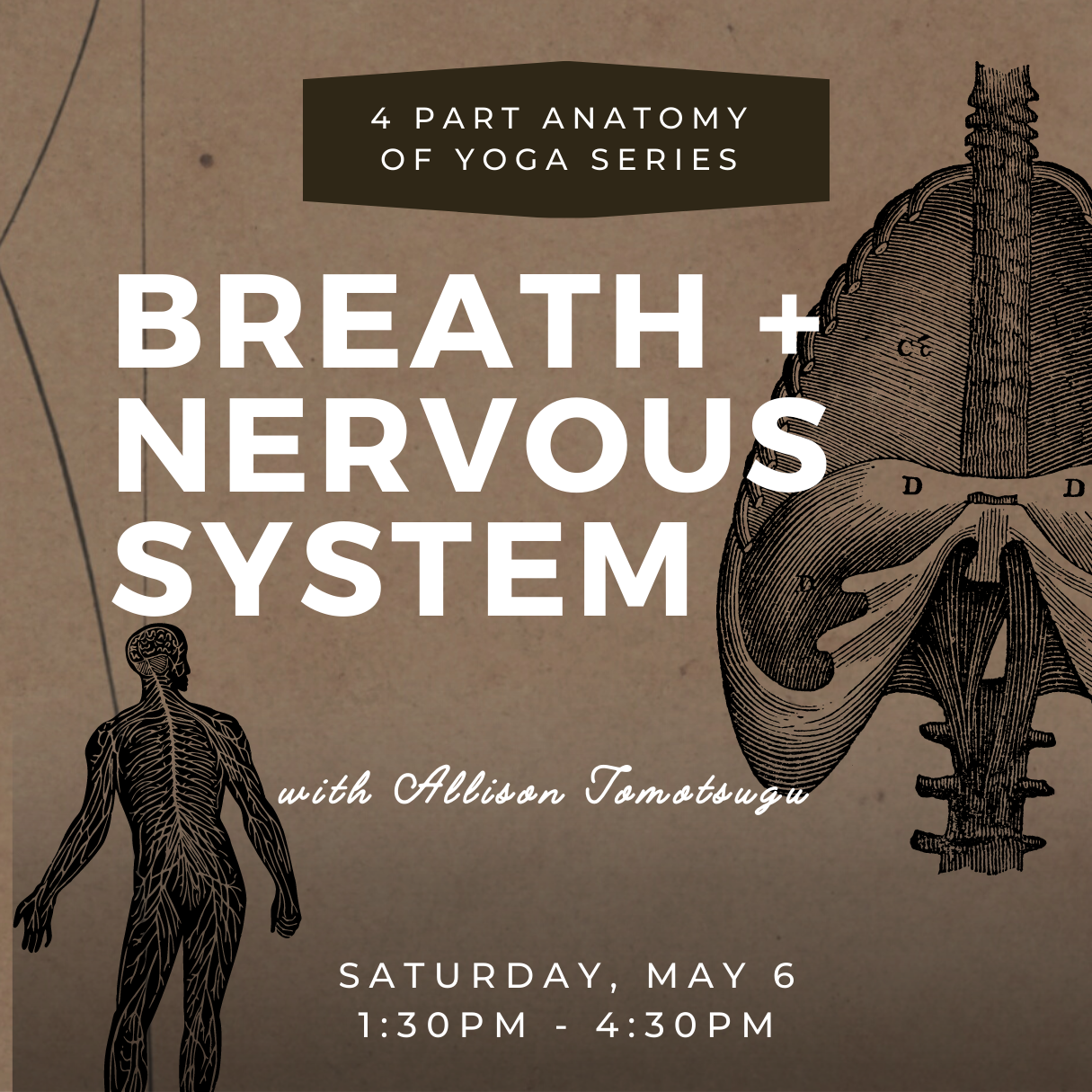
Saturday, May 6
Deepen your knowledge of the anatomy of respiration and the nervous system in this workshop open to yoga teachers and enthusiasts.
Delve into the nervous system and how it relates to pranayama practices (breath control), including the sympathetic and parasympathetic systems.
Breath is vital to yoga practice in its ability to support mental, physical and emotional wellbeing through it’s impact on the nervous system.
We’ll explore the anatomy of the respiratory system, including the mechanics of the diaphragm and the role of the intercostal muscles in breathing.